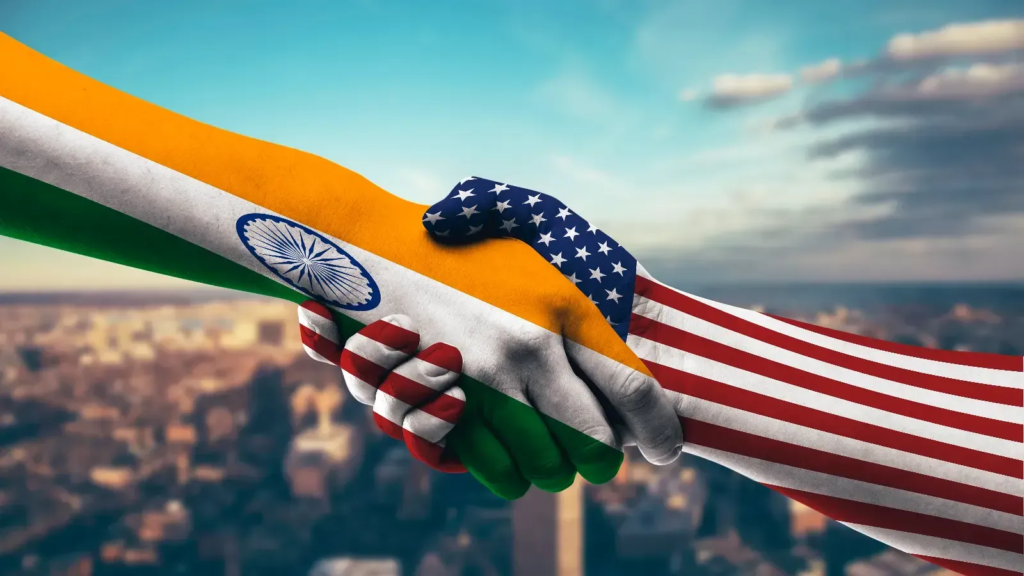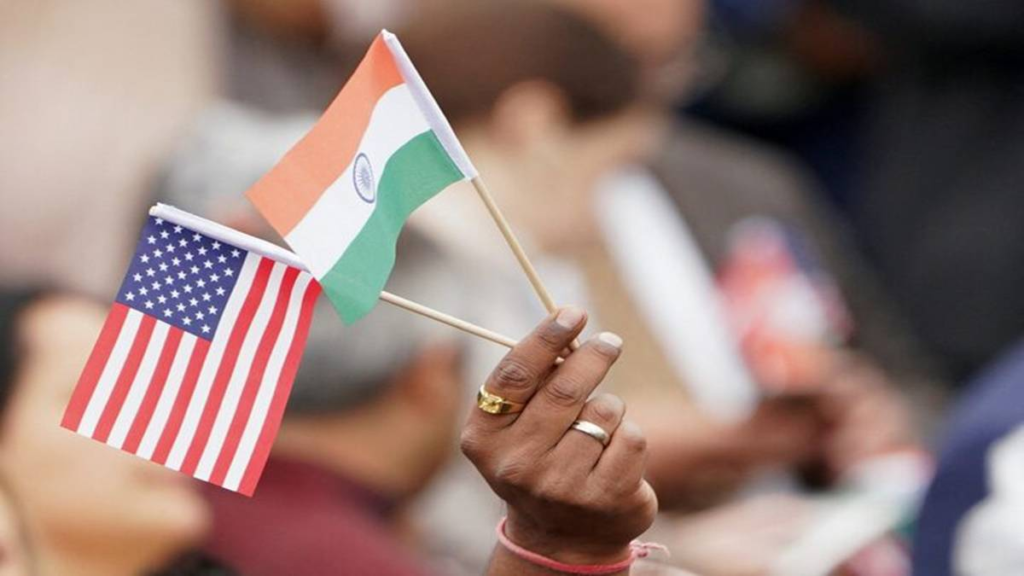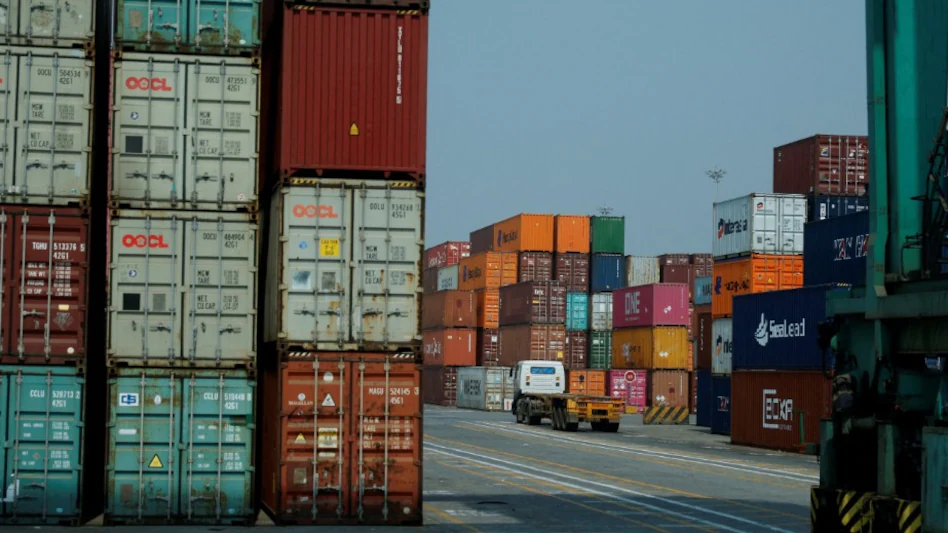In a significant step toward strengthening economic ties, India and the United States are on track to finalize an interim trade deal by June 25, 2025, according to multiple sources. This development comes as both nations work to address trade barriers and boost bilateral commerce ahead of a looming deadline for the reimposition of U.S. tariffs. The interim agreement is seen as a precursor to a broader Bilateral Trade Agreement (BTA), with the first phase targeted for completion by September or October 2025. This news has sparked optimism among businesses and policymakers, as it could pave the way for enhanced market access and reduced tariffs, fostering growth in one of the world’s most significant trade relationships.

A Strategic Push Amid Tariff Concerns
The urgency to finalize the interim trade deal stems from the U.S.’s suspension of a 26% reciprocal tariff on Indian goods, which was imposed on April 2, 2025, but paused until July 9, 2025. India is pushing for a full exemption from this tariff, which would otherwise add to the existing 10% baseline tariff applied to Indian exports. The temporary suspension provides a critical window for negotiators to secure a deal that benefits both nations. According to reports, India’s Commerce and Industry Minister Piyush Goyal has been instrumental in advancing these talks, meeting with U.S. Commerce Secretary Howard Lutnick twice during a recent visit to Washington. These discussions have been described as “constructive” and focused on creating a mutually beneficial agreement.
The interim deal is expected to cover a range of goods and services, with India seeking tariff concessions for labor-intensive sectors like leather and textiles. The U.S., on the other hand, is keen on gaining better market access for its agricultural products and addressing non-tariff barriers, such as India’s quality control regulations. Both sides are working to balance their priorities, with India aiming to protect sensitive sectors like dairy and agriculture through measures like import quotas or minimum import prices. The goal is to create a “win-win” framework that supports economic growth while addressing domestic concerns.
Why This Deal Matters
The U.S. is India’s largest trading partner, with bilateral trade reaching $131.84 billion in the 2024-25 fiscal year. India maintains a trade surplus of $41.18 billion with the U.S., making it a critical market for Indian exports. Approximately 18% of India’s total goods exports and 6.22% of its imports involve the U.S., accounting for 10.73% of India’s total merchandise trade. A successful interim deal could further boost these figures, with both countries aiming to double their bilateral trade to $500 billion by 2030.
For the U.S., the deal aligns with President Donald Trump’s broader trade agenda, which emphasizes reducing trade deficits and securing favorable terms for American businesses. The Trump administration has signaled a willingness to negotiate, with Vice President JD Vance stating in April 2025 that a U.S.-India trade deal would be among the first priorities. However, any reduction in tariffs below the most-favored-nation (MFN) rates would require Congressional approval, adding a layer of complexity to the negotiations.
The interim agreement is also seen as a strategic move for India to mitigate external economic risks. As global trade tensions rise, particularly with competing exporters like China, Vietnam, and Bangladesh facing higher U.S. tariffs, India stands to gain by strengthening its position as a key trading partner. A report from India’s finance ministry highlighted that a successful trade deal could unlock new market opportunities and boost exports, particularly in labor-intensive sectors that employ millions of Indian workers.

Recent Developments and Key Players
The momentum for the interim deal has been building since early 2025. In April, Indian and U.S. trade officials finalized the terms of reference for the first segment of the BTA, setting the stage for rapid progress. India’s chief negotiator, Special Secretary in the Department of Commerce Rajesh Agrawal, concluded a four-day visit to Washington in May, holding detailed discussions with his U.S. counterpart. These talks were followed by Minister Goyal’s high-profile meetings with U.S. officials, including Lutnick and U.S. Trade Representative Jamieson Greer.
A U.S. trade delegation is expected to visit India in June 2025 for what could be the final round of negotiations before the July 9 tariff deadline. Sources indicate that both sides are optimistic about reaching an agreement, with one official stating, “Talks are moving, things are on track.” This sentiment was echoed by White House economic adviser Kevin Hassett, who noted that India is among a select group of countries with trade agreements “close to the finish line.”
The interim deal is likely to focus on “low-hanging fruit,” such as automobiles, select agricultural products, and digital services. It aims to reduce tariffs and non-tariff barriers while protecting sensitive sectors through mechanisms like negative lists or quota restrictions. For instance, India is advocating for a 5-7% reduction in Basic Customs Duty for its labor-intensive exports, which could significantly boost industries like textiles and leather.
Broader Implications for Bilateral Relations
The interim trade deal is not just about economics—it’s a signal of deepening ties between the world’s largest democracy and the world’s largest economy. The agreement follows a February 2025 meeting between Indian Prime Minister Narendra Modi and President Trump, where both leaders expressed their commitment to a comprehensive BTA. The interim deal serves as an “early harvest” agreement, addressing immediate priorities while laying the groundwork for a more ambitious pact by the fall of 2025.
This development also comes at a time when global trade dynamics are shifting. The U.S. has recently adjusted its tariff policies, pausing a proposed 50% tariff on the European Union to allow for negotiations until July 9, 2025. Similarly, exemptions on electronics imports from China have softened the U.S.’s stance in some areas, creating opportunities for India to position itself as a competitive alternative in global supply chains. For example, India’s growing role in manufacturing, particularly in electronics and automobiles, could benefit from reduced tariffs and increased market access in the U.S.
Challenges and Opportunities Ahead
While the prospects for an interim deal are promising, challenges remain. India’s push for tariff exemptions and the U.S.’s demand for greater Secular
greater market access require careful balancing to avoid domestic backlash in either country. India’s sensitive sectors, such as dairy and agriculture, are politically charged, and any concessions will need to be carefully managed to protect local farmers and businesses. Similarly, the U.S. faces pressure to maintain its trade deficit reduction goals, which could complicate negotiations.
Despite these hurdles, the interim deal offers significant opportunities. For India, it could mean increased exports, job creation, and a stronger foothold in the U.S. market. For the U.S., it provides access to one of the world’s fastest-growing consumer markets and a strategic partner in countering China’s economic influence. The deal also aligns with India’s broader economic strategy of reducing reliance on imports and boosting domestic manufacturing through initiatives like “Make in India.”
Looking Forward
As the June 25 deadline approaches, all eyes are on the upcoming U.S. delegation visit to India. The successful conclusion of the interim trade deal would mark a milestone in India-U.S. relations, setting the stage for a more comprehensive agreement later in 2025. Businesses in both countries are eagerly awaiting the outcome, as it could unlock new opportunities for trade and investment.

For more details on the ongoing negotiations, readers can refer to recent reports from Mint and The Hindu BusinessLine. These sources provide in-depth coverage of the trade talks and their potential impact on bilateral relations.
In conclusion, the interim trade deal between India and the U.S. represents a pragmatic step toward stronger economic ties. By addressing immediate trade barriers and setting a foundation for future cooperation, both nations are signaling their commitment to a partnership that could reshape global trade dynamics. As negotiations progress, the world will be watching to see how this deal shapes the economic landscape in the months and years to come.
Also Know :- Dow Surges 740 Points on Eased Trade Tensions, Marking Best Day in 2025






